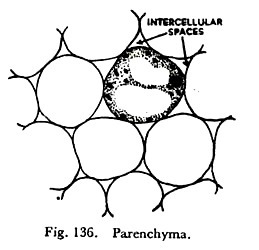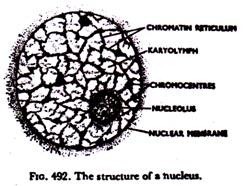The Golgi apparatus or Golgi bodies of eukaryotic cells are organelles that play a variety of functions, including:
(1) The packaging of secretory materials that are to be discharged from the cell,
(2) The processing of proteins (e.g., glycosylation, phosphorylation, sulfation, and selective proteolysis) synthesized by ribosomes of the rough endoplasmic reticulum,
(3) The synthesis of certain polysaccharides and glycolipids,
(4) The sorting of proteins destined for various locations in the cell,
(5) The proliferation of new membranous elements for the plasma membrane, and
(6) The reprocessing of plasma membrane components that have reentered the cytosol during endocytosis.
The Golgi apparatus was first described in 1898 by C. Golgi, a pioneer of cytology and cytochemistry (Fig. 18-1). Although Golgi referred to the structure as the “internal reticular apparatus” of the cell, the organelle was later renamed in his honor. Golgi received the Nobel Prize in 1906 for his many cytological findings and his cytochemical and histochemical innovations.
For many decades after its original description, the Golgi apparatus remained a controversial cell structure because it was not readily identifiable in all cells. To visualize these organelles, Golgi employed stains containing silver, osmium, and other heavy metals, and it was believed by many other cytologists that the organelle was an artifact produced by precipitation of the metal within the cell. The controversy was not put to rest until the 1950s, when the existence of the Golgi apparatus was confirmed by electron-microscopic studies; these studies also shed light on the details of the apparatus’ organization (Fig. 18-2).
Structure of the Golgi Apparatus:
The contemporary model of the structure of the Golgi apparatus is based on some 25 years of transmission and scanning electron microscopic study as well as biochemical studies of isolated Golgi membranes. The photomicrographs reproduced in Figure 18-2 show the typical appearance of the organelle when studied by transmission electron microscopy.
Although Golgi bodies differ somewhat in organization from one type of tissue or cell to another, they characteristically take the form of a stack of flattened, oval cisternae surrounded at their circumferencial edges and above and below by vesicles and tubular structures (Fig. 18-3). Golgi bodies are also referred to as dictyosomes, which mean “stacklike bodies.”
In its strictest sense, the dictyosome does not include the vesicles that fuse with or are discharged from the margins of the cisternae. In most animal cells, the number of Golgi cisternae is five or six, the lumen of each cisterna varying in width from about 500 to 1000 nm. The Golgi bodies of plant cells often have 20 or more cisternae. The margins of each cisterna are gently curved so that the entire Golgi body takes on a bow-like appearance. The cisterna at the convex end of the dictyosome comprises what is called the cis face or forming face, and the cisterna at the concave end comprises the trans face or maturing face.
The small vesicles that are adjacent to the cis face are believed to fuse with and contribute additional structure to the Golgi body. The vesicles near the trans face are larger and are believed to be formed from the uppermost cisterna. Small vesicles may also be discharged from the margins of the cisternae that are between the cis and trans faces. Recent scanning electron photomicrographs of Golgi bodies (Fig. 18-4) reveal a structure that is remarkably consistent with models of the organelle based solely on transmission studies.
In many cells, particularly those in which the Golgi bodies’ main function is related to secretion, the faces of the Golgi bodies are arranged in a specific manner. The forming face is located next to either the nucleus or a specialized portion of the endoplasmic reticulum that lacks bound ribosomes and is called “transitional” ER.
The maturing face is usually directed toward the plasma membrane. It is believed that the nuclear membrane and endoplasmic reticulum are the source of the small vesicles that fuse with the cis face, whereas some of the larger vesicles arising from the maturing face are secretory vesicles and subsequently fuse with the plasma membrane.
When vesicles released from the maturing face of the dictyosome form an internal cell structure, such as the developing acrosome of sperm cells (Fig. 18-5), the maturing face is directed toward the site of deposition. Thus, in the case of the sperm cell acrosome, the maturing face is proximal to the nucleus. Because of their intimate morphological and physiological associations with the endoplasmic reticulum and intracellular vesicles such as lysosomes, Golgi bodies are sometimes referred to as elements of the endomembrane or vacuolar system of cells.
The cisternae membranes of Golgi bodies are smooth, that is, they are not lined by ribosomes or other particles. At their margins, the cisternae may be perforated, creating fenestrae, or they may give rise to tubular extensions that branch and anastomose with each other (Fig. 18-3). The size and number of Golgi bodies vary from one type of cell to another and according to the cell’s metabolic activity. The organelle is therefore to be thought of as being almost continuously in a state of flux. Some cells are reported to have only one Golgi body and others may have hundreds.
Because one of the major functions of the Golgi apparatus is secretion, it is not surprising that the size and number of Golgi bodies increase during periods of active cellular secretion. In plant cells, the number of Golgi bodies increases during cell division when these organelles secrete materials that form the cell plate, which then develops into the cell wall that separates the two new cells.
The goblet cells found in the intestinal epithelium contain only a single, large Golgi body located in the region of the cell where mucigen granules are stored prior to their secretion (Fig. 18-6). In these cells, the size of the Golgi body increases dramatically during periods of digestive activity.
Origin and Development of Golgi Bodies:
The intracellular origin of Golgi bodies has been a hotly debated subject for many years.
Among the proposed sources of new Golgi bodies are:
(1) Vesicles dispatched from the endoplasmic reticulum,
(2) Vesicles dispatched from the outer membrane of the nuclear envelope,
(3) Vesicles formed by invaginations of the plasma membrane, and
(4) Division of Golgi bodies already present in the cell.
The most widely accepted view is that Golgi bodies are formed from vesicles dispatched from the ER. These vesicles are called transition vesicles and are seen in Figure 18-7. Transition vesicles migrate to the forming face of the Golgi body, fuse there with existing cisterna membranes, and in so doing contribute to the organelle’s growth. Presumably, a complete Golgi body can be formed in this manner.
 Aggregations of transition vesicles occur in areas of the cytoplasm referred to as zones of exclusion, which are free of ribosomes. These zones are often surrounded by membranes of the endoplasmic reticulum or the nuclear envelope. Small Golgi bodies, which are presumed to represent early stages in the development of the organelle, are found in the zones of exclusion.
Aggregations of transition vesicles occur in areas of the cytoplasm referred to as zones of exclusion, which are free of ribosomes. These zones are often surrounded by membranes of the endoplasmic reticulum or the nuclear envelope. Small Golgi bodies, which are presumed to represent early stages in the development of the organelle, are found in the zones of exclusion.
The cells of dormant seeds of higher plants generally lack Golgi bodies but they do display zones of exclusion containing aggregations of small vesicles. Photomicrographs of cells in early stages of germination suggest progressive development of Golgi bodies in these zones of exclusion (Fig. 18-7), and the development of Golgi bodies coincides with the disappearance of the aggregations of vesicles.
In frog oocytes, Golgi bodies appear to develop from clusters of vesicles in zones of exclusion (Fig. 18-8). That these early stages of Golgi body development are dependent on protein synthesis was shown by G. Werz, who found that actinomycin D (an inhibitor of protein synthesis) prevents the formation of Golgi body prestages in Acetabularia.
During cell division in both animals and plants, the number of Golgi bodies increases, for the number of organelles in each daughter cell just after cell division is about the same as the number in the parent cell prior to division. Photomicrographs obtained at successive stages of cell division indicate that more Golgi bodies are present in cells that are in the metaphase or anaphase of mitosis than in earlier stages.
In the multinucleate alga Botrydium granulatum, a single Golgi body is seen at each pole of the dividing cell just prior to the formation of the spindle. By late metaphase, two Golgi bodies are present at each end of the spindle and are separated by the centriole. Despite the seeming rapidity with which new Golgi bodies appear during cell division, there is no direct evidence for an accompanying division of Golgi bodies.
Because it is not possible to observe living Golgi bodies clearly, the developmental sequence of a single organelle cannot be followed directly. However, developmental sequences have been worked out by observing dictyosomes of cells at different stages of cell growth. For example, when cultures of the ciliate Tetrahymena pyriformis growing by fission are in the logarithmic phase, no typical Golgi structures are seen in the cells. However, individual, smooth, flattened saccules can be seen in the oral region.
These saccules are of nonuniform shape and are not associated with one another. Tetrahymena can be induced to conjugate if the cells are starved for 12-48 hours. During starvation, the saccules in the oral region align to form stacks. No vesicles are seen around these stacks, suggesting that the stacks are formed from the preexisting saccules and do not arise de novo.
This also suggests that the stacks are not processing proteins or dispatching products. When starved cells of opposite mating types are mixed together, conjugation occurs within 3 hours. Five minutes after mixing, and well before conjugation begins, the stacked saccules in the oral region enlarge and numerous new vesicles can be seen. The structure now has the appearance of a Golgi apparatus that is processing material. By the time the mating cells separate the Golgi bodies are well developed. If the cells are refed, the ordered arrangement of membranous sacs is lost.
The aggregation of small vesicles or saccules to form a Golgi apparatus is also seen in such diverse cells as developing zoospores and sperm and embryonic liver tissue. In embryonic liver cells, the Golgi apparatus appears to form from the coalescence of tubular cisternae localized at the margins of rough endoplasmic reticulum. As the liver cells mature, the tubular cisternae become platelike, and still later secretory vesicles form at the outer edges of the cisternae. This sequence is illustrated in Figure 18-9.






